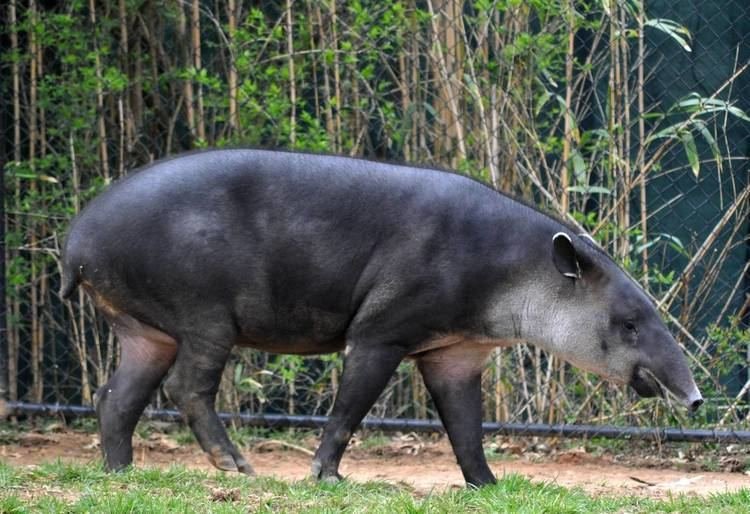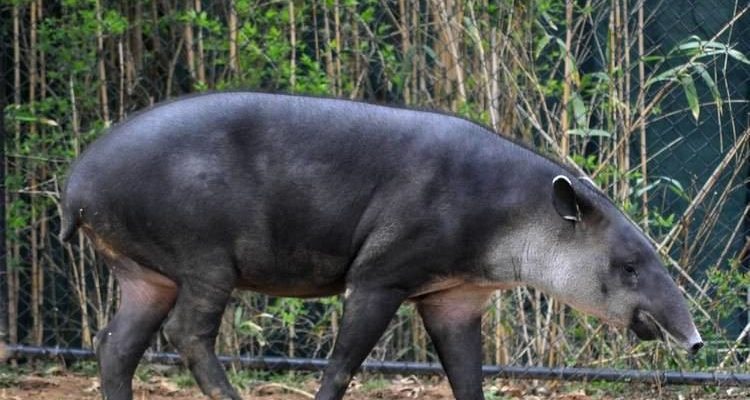
Baird’s tapirs navigate their world with a mix of instinctive behavior and learned experiences. Their intelligence can be seen not just in what they do but also in how they adapt to their surroundings. Let’s dive into the cognitive abilities of these remarkable animals, exploring what makes them tick, and understand the complexities of their behavior in the wild.
What Is a Baird’s Tapir?
Before we discuss their intelligence, let’s get to know the Baird’s tapir a bit better. Native to Central and South America, this species is the largest of the tapirs and can weigh up to 900 pounds! They have a stout body covered with a tough, thick skin that helps protect them from the elements. With their long snouts, they resemble a small hippopotamus or a large pig, which adds to their quirky charm.
Their habitats include tropical rainforests, grasslands, and wetlands, where they play a vital role as herbivores. Tapirs are often night owls, venturing out at night to forage for leaves, fruits, and aquatic plants. This nocturnal lifestyle allows them to avoid many predators while making the most of their food sources.
Cognitive Abilities: A Peek Inside Their Minds
You might be wondering—just how smart are Baird’s tapirs? While they don’t perform tricks like dogs or solve puzzles like crows, they do possess some impressive cognitive abilities. For starters, these animals exhibit a strong sense of spatial awareness. This means they can navigate through dense forests and waterlogged terrains efficiently, remembering the locations of food sources and potential dangers.
In the wild, Baird’s tapirs showcase problem-solving skills, especially when it comes to finding food. For instance, they might use their elongated snouts to reach fruits hanging high in trees or to dig in mud for roots and tubers. This resourcefulness is a sign of intelligence, showing that they can adapt their strategies based on their environment.
Learning Through Experience
Just like humans, Baird’s tapirs can learn from their experiences. Studies have shown that they can remember the layouts of their territories and adjust their movements based on past encounters with other animals or food availability. This ability to learn and adapt is key to their survival.
When a tapir encounters a new food source, it will often investigate before deciding to eat it. If they find it tasty, they’ll remember where to find it again. This kind of associative learning is a hallmark of intelligent behavior in many animal species.
Social Behavior and Communication
Now, let’s chat about how Baird’s tapirs interact with each other. While they are mostly solitary animals, they do have social behaviors that reveal their cognitive skills. For example, a mother tapir will communicate with her young through a series of calls and body language, teaching them important survival skills.
You might find it interesting that mother tapirs are known to be quite protective. They guide their calves to safe feeding spots, demonstrating a level of nurturing that indicates thoughtful behavior. This bonding process shows that tapirs have emotional intelligence, understanding the needs of their young.
Vocalizations and Body Language
Baird’s tapirs also use vocalizations to communicate. They make various sounds, such as whistles or grunts, depending on the situation. For instance, when feeling threatened, a tapir may emit a series of alarm calls that can alert other tapirs in the area of potential danger.
On the flip side, body language plays a huge role in their social interactions. A tapir might show signs of aggression by raising their head or making themselves appear larger. Understanding these signals requires a level of awareness and cognitive processing that speaks volumes about their intelligence.
Adaptability: Survival Skills in Action
One of the most impressive aspects of the Baird’s tapir is its adaptability. These animals thrive in various environments, from dense jungles to open wetlands. Their ability to adjust their behavior based on changing conditions is a testament to their intelligence.
For instance, during dry seasons, Baird’s tapirs may travel longer distances to find water or food. This not only demonstrates their ability to learn about their environment but also highlights their problem-solving skills when faced with challenges.
Role in Ecosystems
Baird’s tapirs play a crucial role in maintaining the health of their ecosystems. By foraging on various plants and fruits, they help disperse seeds through their droppings, promoting plant growth and biodiversity. This behavior shows an understanding of their role within the ecosystem, as they instinctively contribute to the balance of their habitat.
Additionally, their ability to adapt their feeding strategies based on seasonal changes emphasizes their cognitive skills. Baird’s tapirs are not just passive inhabitants of their environment; they actively shape it.
Conservation and Threats
Despite their impressive adaptations and intelligence, Baird’s tapirs face numerous threats due to habitat destruction and poaching. As humans continue to encroach on their habitats, these remarkable animals find it increasingly difficult to survive.
Conservation efforts are essential for protecting their populations. Understanding their behaviors and cognitive abilities can help researchers create better strategies for their preservation. By recognizing the intelligence of Baird’s tapirs, we can appreciate their significance and the need to maintain their ecosystems.
How You Can Help
If you’re passionate about wildlife, there are many ways you can support Baird’s tapirs and other endangered species. Consider supporting conservation organizations that focus on habitat protection, or even spreading awareness about these creatures through social media. Every little effort counts and can contribute to the protection of their natural environments.
Final Thoughts on Baird’s Tapir Intelligence
In exploring the cognitive abilities and behaviors of Baird’s tapirs, it’s clear that these unique creatures possess a surprising level of intelligence. From their problem-solving skills and social behaviors to their adaptability in various environments, Baird’s tapirs are much more than just interesting wildlife; they play vital roles in their ecosystems.
So, the next time you think about animal intelligence, remember the Baird’s tapir and its ability to navigate the challenges of life in the wild. Their story reminds us that even the less celebrated animals have their own unique skills and intelligence to share with the world. Together, let’s work towards understanding and protecting these incredible creatures for future generations.

